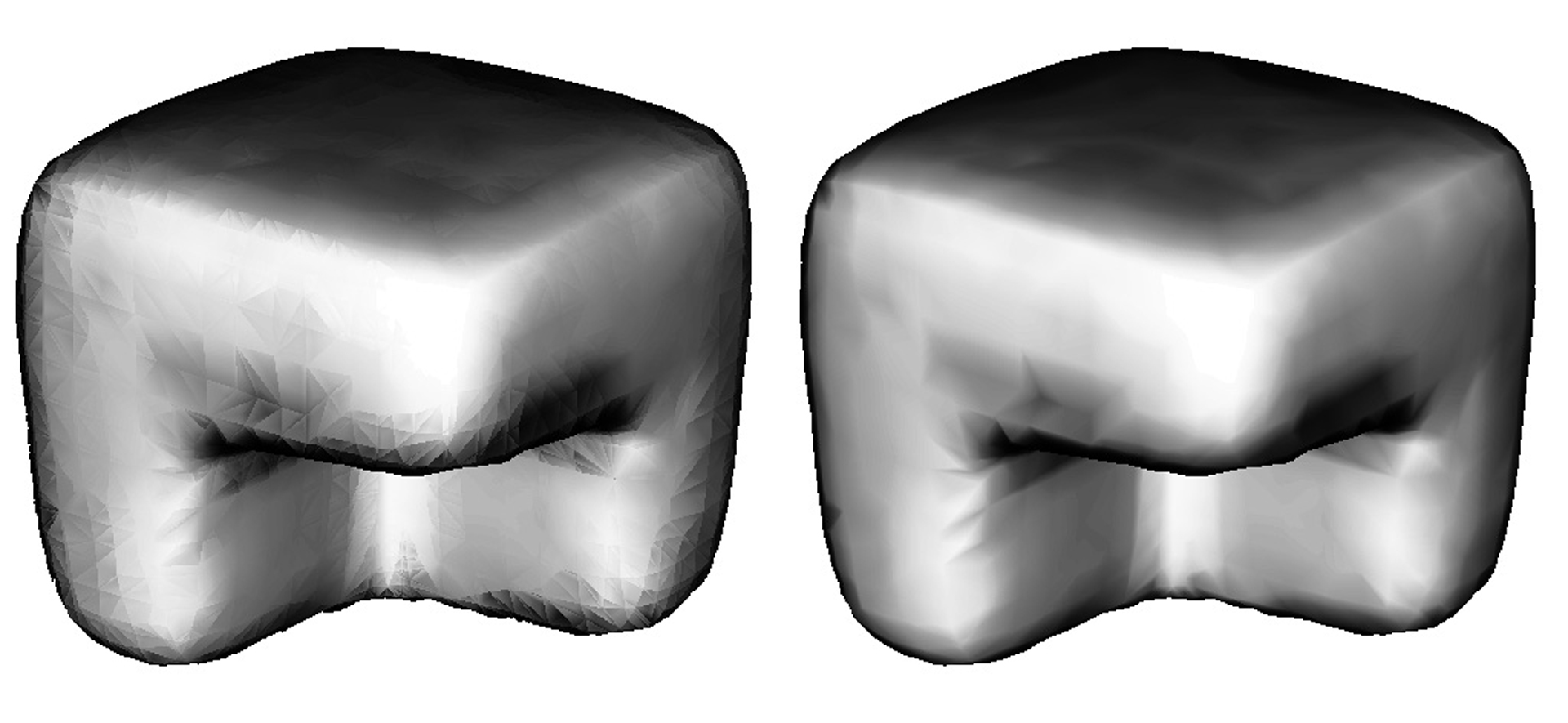“Efficiently using graphics hardware in volume rendering applications” by Westermann and Ertl
Conference:
Type(s):
Title:
- Efficiently using graphics hardware in volume rendering applications
Presenter(s)/Author(s):
Abstract:
OpenGL and its extensions provide access to advanced per-pixel operations available in the rasterization stage and in the frame buffer hardware of modern graphics workstations. With these mechanisms, completely new rendering algorithms can be designed and implemented in a very particular way. In this paper we extend the idea of extensively using graphics hardware for the rendering of volumetric data sets in various ways. First, we introduce the concept of clipping geometries by means of stencil buffer operations, and we exploit pixel textures for the mapping of volume data to spherical domains. We show ways to use 3D textures for the rendering of lighted and shaded iso-surfaces in real-time without extracting any polygonal representation. Second, we demonstrate that even for volume data on unstructured grids, where only software solutions exist up to now, both methods, iso-surface extraction and direct volume rendering, can be accelerated to new rates of interactivity by simple polygon drawing and frame buffer operations.
References:
1. K. Akeley. Reality Engine Graphics. ACM Computer Graphics, Proc. SIG- GRAPH ’93, pages 109-116, July 1993.
2. B. Cabral, N. Cam, and J. Foran. Accelerated Volume Rendering and Tomographic Reconstruction Using Texture Mapping Hardware. In ACM Symposium on Volume Visualization ’94, pages 91-98, 1994.
3. T.J. Cullip and U. Neumann. Accelerating Volume Reconstruction with 3D Texture Hardware. Technical Report TR93-027, University of North Carolina, Chapel Hill N.C., 1993.
4. J. Danskin and P. Hanrahan. Fast Algorithms for Volume Ray Tracing. In ACM Workshop on Volume Visualization ’92, pages 91-98, 1992.
5. M. Garrity. Ray Tracing Irregular Volume Data. In ACM Workshop on Volume Visualization ’90, pages 35-40, 1990.
6. C. Giertsen. Volume Visualization of Sparse Irregular Meshes. Computer Graphics and Applications, 12(2):40-48, 1992.
7. P. Haeberli and K. Akeley. The Accumulation Buffer: Hardware Support for High-Quality Rendering. ACM Computer Graphics, P1vc. SIGGRAPH ’90, pages 309-318, July 1990.
8. M. Haubner, Ch. Krapichler, A. L6sch, K.-H. Englmeier, and van Eimeren W. Virtual Reality in Medicine – Computer Graphics and Interaction Techiques. IEEE Transactions on Information Technology in Biomedicine, 1996.
9. J.T. Kajiya and B. R Von Herzen. Ray Tracing Volume Densities. ACM Computer Graphics, P1vc. SIGGRAPH ’84, 18(3): 165-174, July 1984.
10. W. KriJger. The Application of Transport Theory to the Visualization of 3-D Scalar Data Fields. In IEEE Visualization ’90, pages 273-280, 1990.
11. R Lacroute and M Levoy. Fast Volume Rendering Using a Shear-Warp Factorization of the Viewing Transform. Computer Graphics, Proc. SIGGRAPH ’94, 28(4):451-458, 1994.
12. D. Laur and R Hanrahan. Hierarchical Splatting: A Progressive Refinement Algorithm for Volume Rendering. ACM Computer Graphics, Proc. SIGGRAPH ’93, 25(4):285-288, July 1991.
13. M. Levoy. Efficient Ray Tracing of Volume Data. ACM Transactions on Graphics, 9(3):245-261, July 1990.
14. W.E. Lorensen and H.E. Cline. Marching Cubes: A High Resolution 3D Surface Construction Algorithm. ACM Computer Graphics, Proc. SIGGRAPH ’87, 21(4):163-169, 1987.
15. N. Max, R Hanrahan, and R. Crawfis. Area and Volume Coherence for Efficient Visualization of 3D Scalar Functions. In ACM Workshop on Volume Visualization ’91, pages 27-33, 1991.
16. C. Montani, R. Scateni, and R. Scopigno. Discretized Marching Cubes. In IEEE Visualization’ 94, pages 281-287, 1994.
17. J. Montrym, D. Baum, D. Dignam, and C. Migdal. Infinite Reality: A Real-Time Graphics System. Computer Graphics, Proc. SIGGRAPH ’97, pages 293-303, July 1997.
18. M. Peercy, J. Airy, and B. Cabral. Efficient Bump Mapping Hardware. Computer Graphics, P1vc. SIGGRAPH ’97, pages 303-307, July 1997.
19. H. Shen and C. Johnson. Sweeping Simplices: A Fast Iso-Surface Axtraction Algorithm for Unstructured Grids. In IEEE Visualization ’95, pages 143-150, 1995.
20. R Shirley and A. Tuchman. A Polygonal Approximation to Direct Scalar Volume Rendering. ACM Computer Graphics, P1vc. SIGGRAPH ’90, 24(5):63-70, 1990.
21. C. Silva and J. Mitchell. The Lazy Sweep Ray Casting Algorithm for Rendering Irregular Grids. Transactions on Visualization and Computer Graphics, 4(2), June 1997.
22. C. Silva, J. Mitchell, and A. Kaufman. Fast Rendering of Irregular Grids. In ACM Symposium on Volume Visualization ’96, pages 15-23, 1996.
23. C. Stein, B. Becker, and N. Max. Sorting and hardware assisted rendering for volume visualization. In ACM Symposium on Volume Visualization ’94, pages 83-90, 1994.
24. A. Van Gelder and K. Kwansik. Direct Volume Rendering with Shading via Three-Dimensional Textures. In R. Crawfis and Ch. Hansen, editors, ACM Symposium on Volume Visualization ’96, pages 23-30, 1996.
25. R. Westermann and T. Ertl. The VSBUFFER: Visibility Ordering unstructured Volume Primitives by Polygon Drawing. In IEEE Visualization ’97, pages 35- 43, 1997.
26. J. Wilhelms and A. Van Gelder. Octrees for taster Iso-Surface Generation. ACM Transactions on Graphics, 11(3):201-297, July 1992.
27. J. Wilhelms, A. van Gelder, P. Tarantino, and J. Gibbs. Hierarchical and Parallelizable Direct Volume Rendering for Irregular and Multiple Grids. In IEEE Visualization 1996, pages 57-65, 1996.
28. R Williams. Visibility Ordering Meshed Polyhedra. ACM Transactions on Graphics, 11(2):102-126, 1992.
29. R Williams and N. Max. A Volume Density Optical Model. In ACM Workshop on Volume Visualization ’92, pages 61-69, 1992.
30. O. Wilson, A. Van Gelder, and J. Wilhelms. Direct Volume Rendering via 3D Textures. Technical Report UCSC-CRL-94-19, University of California, Santa Cruz, 1994.
31. R. Yagel, D. Reed, A. Law, R Shih, and N. Shareef. Hardware Assisted Volume Rendering of Unstructured Grids by Incremental Slicing. In ACM Symposium on Volume Visualization ’96, pages 55-63, 1996.




